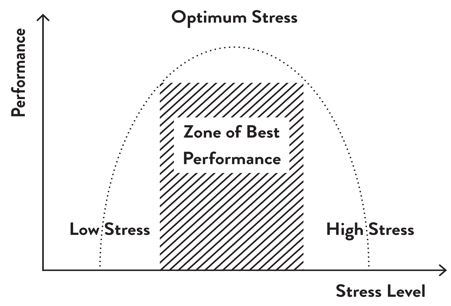
When feedback works
November 21, 2016
New Science – Utilising feedback successfully
November 22, 2016Minimising threat & maximising reward in business


What’s actually happening in your brain and nervous system when you feel threat or reward?

Imagine this scenario: there’s a new employee who has recently joined the wider team. You know you should build a relationship with her. You have heard she came from a competitor you are trying to understand more about and she will have a lot of insight into the company. It would make sense for you to understand more about what’s going on in the competitor and to have a good relationship with her. But you just don’t manage to hang back and chat to her after a meeting, or get around to making that lunch date. She makes you feel uncomfortable, and your discomfort overrides the logic that says you should get to know her better.
What’s actually happening in your brain and nervous system is that you’re picking up some unconscious signal that this person is a threat. That may be real, or an association: she may remind you of someone you distrust and you’re linking the two people. Or you may feel she is different to you, she doesn’t share the same values and interests. The emotional, limbic system of your brain is activated: it perceives a threat and signals you to avoid her.
A lot of this reaction is being orchestrated by the nervous system and in particular the vagus nerve. The word vagus means “wandering” in Latin. The nerve is known by this name because it has multiple branches that diverge from two thick stems rooted in the cerebellum and brainstem that wander to the lowest parts of your abdomen touching your heart and most major organs along the way.
The vagus nerve is constantly sending sensory information about the state of the body’s organs “upstream” to your brain – 80-90% of the nerve fibres in the vagus nerve are dedicated to communicating to your brain. As with any mind-body feedback loop, messages also travel “downstream” from your brain through the vagus nerve signalling your organs to create an inner-calm so you can “rest-and-digest” during times of safety or to prepare your body for “fight, flight, freeze” in times of threat.

The sympathetic nervous system – or the threat system- is used to arouse you; it thrives on adrenaline and cortisol.

Threat and reward
Your vagus nerve determines how you initially respond under pressure. The autonomic nervous system is comprised of two polar opposite systems which allows your body to maintain homeostasis and inner-stability.
The sympathetic nervous system – or the threat system- is used to arouse you; it thrives on adrenaline and cortisol.
The parasympathetic nervous system is the opposite. The vagus nerve is responsible for the function of your parasympathetic nervous system. It is used to slow you down like the brakes on your car and uses neurotransmitters like acetylcholine and gamma-aminobutyric acid GABA to lower heart rate, blood pressure, and to slow down the functioning of other organs.
Unfortunately, the vagus nerve’s reflexive responses can backfire and also impact you when you are worried or aroused before an important event, feel intimidated by a person or situation, or insecure. At times like these your vagus nerve acts as if you are in real danger which exacerbates these responses. Like the reaction to the new colleague described above.
All of the physical symptoms of anxiety—racing heart, sweaty palms, dry mouth, upset stomach, shakiness—are the result of your vagus nerve disengaging. You can learn to control this and keep it engaged to manage pressure. Practices like mindful breathing, relaxation techniques and meditative practices like yoga can help you manage the vagus nerves strength or tone.
Action tendencies
Threat is commonly described as – away from and reward as towards. This is because they create these different action tenancies. Threat makes you want to move away from what is happening. Like when you avoid thinking about the disturbing behaviour of your colleague towards you or the tax return you have to do even though you know logically that leaving it to the last minute will only make it worse. On the other hand, an approach or reward sense occurs when you find yourself looking forward to a meeting with a team you like, or when you want to get on with a project you find stimulating. These reactions happen at an unconscious level, so we seldom put a label on why we act the way we do but they drive our behaviour because we react to them without bringing them to consciousness.

The brain is highly evolved to work in a social environment. If that social environment appears to be threatening in any way, the brain switches into survival mode.

Social situations
The brain is highly evolved to work in a social environment. If that social environment appears to be threatening in any way, the brain switches into survival mode.
When the environment provides the social support the brain needs when you are: being included in a group, know what’s happening, feel a connection with others, sense trust and congruence between values and behaviours, have another person support you…The brain experiences a sense of reward, you feel good.
Without the social support we need, older parts of our brain – the parts that govern fight or flight – are activated. And that takes resources away from the newer parts of the brain which help lateral thinking, connection-making, creativity, and the regulation of emotions.
This happens because, from an evolutionary perspective, we didn’t need those parts of the brain to protect ourselves in a threatening environment. The newer prefrontal cortex may be powerful but it is slow compared to the older brain. Stopping to analysis whether the movement in the bush is an animal about to pounce or the wind would not have kept the gene pool topped up.
But in modern business, survival-brain mode impacts on our ability to engage with others and perform well at work. If we can get better at understanding this reaction in ourselves and our colleagues, we can build more productive relationships and be more influential.

The model illustrates that peak performance is achieved when people experience a moderate level of stress

Different levels of activation
Some people seem to handle change and difficult situations – stressful situations – better than others, and there are a couple of useful theories about why. One theory suggests this is related to the degree of arousal they experience.

As early as the 1908 the “Inverted-U model” (also known as the Yerkes-Dodson Law after its psychologist inventors) has been used to demonstrate the relationship between stress, or arousal, and performance. The model illustrates that peak performance is achieved when people experience a moderate level of stress, typically close to the top of an inverted U on a chart. When we experience too little or too much arousal, or stress, there’s a negative impact on performance.
The bottom-left-hand corner of the U is where people are under-challenged. Not enough arousal, and you just can’t get around to that report, that phone call or even clearing emails.
At the midpoint we’re in “Flow”, a state defined by psychologist Mihaly Csikszentmihalyi. He has defined a formula to help people achieve the flow state. In essence, it involves striking a balance between how difficult you believe a task to be, and how capable you think you are of carrying it out. If the challenge is too low you go into the drone zone, and never engage. If you think the task is beyond you, you go into the panic zone and go to pieces.
Once arousal passes the mid-point (the peak of the upside-down U), there is “over-arousal:” what we would describe as “being stressed.” In this state we’re likely to react emotionally, we may lose sleep, be forgetful, and be poor at making connections between bits of information. It’s that feeling when you say something and then realise you have not made the connection with something you already knew about that person.
Threat and reward preferences
The second theory about why people react in different ways to difficult situations is called the ‘avoid response preference’ model. People who have dominate activity in the left prefrontal cortex tend to more frequently experience and seek out reward. Whereas those with dominate activity in the right prefrontal cortex are more likely to be experiencing inhibiting avoidance responses. These two dominant states build into personality traits or preferences for certain types of behaviour or behavioural habits if you like. Individual differences in these preferences and how they are triggered will depend on many factors including the level of threat and the sensitivity of the individual. It can be useful to think about which preference may be dominate in an individual or group of individuals and how certain actions in the organisation or may be activating the preference.

Companies have a more or less threatening or rewarding culture.

Where does threat and reward play out in the business?
Companies have a more or less threatening or rewarding culture. People get accustomed to working in the environment but a threatening culture comes at a cost: people need more energy to stay focused, they are likely to be less creative and more easily pushed over the edge into debilitating stress.
There are four areas where we frequently see threat and reward play out in business and they are change, influence, performance management and the levels of stress in the organisation. The first three have a number of common features. Namely people need to do something new and potentially stop doing something that they have personally invested time, energy and skills into. Because of the way the brain works these can be a challenge. We will talk more about change next month. This month we have looked at threat and reward in feedback especially related to Performance Management systems.
When people learn about the threat / reward response in the brain, and apply it to their own situation, very often a light bulb comes on. Their insight enables them to formulate new strategies to overcome unconscious responses and do what will be best for the organisation, and their own career. Sometimes it’s enough just to understand the science and why we’ve been responding in a particular way. At other times people may need tools or coaching to put together new strategies.
Once we understand how the brain and nervous system works we are no longer at the mercy of our unconscious reactions: we can engage the prefrontal cortex, the rational, goal-setting system of the brain which allows us to override the threat response. We’ll have coffee with this colleague and realise that her off-putting manner is because she’s ill-at-ease in a new company, and find that she’s actually quite likeable as well as very useful.
Related Content



